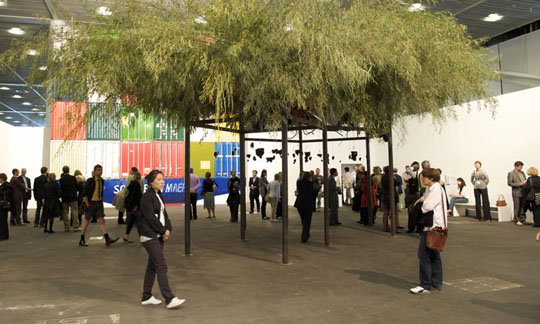The consensus among the 61,000- odd dealers, collectors, museum curators, media and art lovers who descended on the Swiss town of Basel for the 40th edition of the annual Art Basel fair on June 10-14 is that the art market is surprisingly healthy despite a global economic recession.
Regarded as the world's premiere trade show for modern and contemporary art, Art Basel was facing its first test since the September 2008 collapse of American bank Lehman Brothers sent the financial world into a tailspin and had a corresponding effect on the art market, which had seen unprecedented growth throughout the past decade. A robust total of 309 international participants suggested that, despite the substantial costs of booth fees and shipping, dealers are still eager to have a presence at Art Basel.
Tokyo galleries Taka Ishii, Tomio Koyama, Koyanagi, ShugoArts and SCAI the Bathhouse all returned from last year's edition. Gallery Koyanagi's Atsuko Koyanagi was beaming during the June 9 fair preview, having sold the majority of works by minimalist photographer Hiroshi Sugimoto at prices ranging from $60,000 to $120,000.
















With your current subscription plan you can comment on stories. However, before writing your first comment, please create a display name in the Profile section of your subscriber account page.